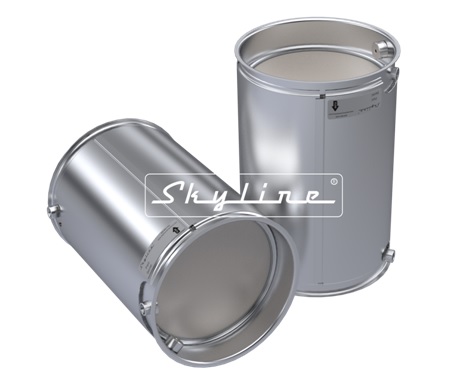Are you planning to replace your diesel particulate filter (DPF) and want to ensure a smooth and successful process? Avoiding common mistakes during DPF filter replacement can save you time, money, and frustration.
Whether you're a truck owner, fleet manager, or maintenance professional, understanding these pitfalls will help you make informed decisions and achieve optimal results.
In this article, we will explore the most common mistakes made during DPF filter replacement and provide practical tips to help you avoid them, ensuring a hassle-free experience.
Choosing the Right DPF Filter
Selecting the appropriate DPF filter is crucial for a successful replacement. One common mistake is using a substandard or incompatible filter.
To avoid this, always opt for a high-quality aftermarket DPF filter, such as Skyline Aftermarket DPF filters, designed specifically as direct replacements for the OEM filters.
The Skyline Aftermarket DPF filters are engineered with Exact-Fit™ technology, providing a perfect fit without the need for cutting or welding. This innovative design ensures a seamless installation process, saving you valuable time and effort.
By choosing a reliable brand like Skyline, you can have confidence in the durability and extended service life of your DPF filter, reducing the frequency of replacements and minimizing downtime.
To understand the importance of choosing the right DPF filter, let's consider a real-life example.
Imagine you own a fleet of heavy-duty trucks used for long-haul transportation. It's time to replace the DPF filters in your vehicles due to regular wear and tear. If you opt for substandard or incompatible filters, they may not fit properly or fail to meet the required specifications.
As a result, you could experience decreased fuel efficiency, reduced engine performance, and potential emission compliance issues.

Proper Installation Techniques
Proper installation techniques play a vital role in the performance and longevity of your DPF filter. Neglecting to follow the correct installation procedures can result in leaks, reduced filter efficiency, and potential damage to the DPF system.
To avoid these pitfalls, it's crucial to pay attention to key aspects of the installation process and adhere to the manufacturer's guidelines.
One common mistake during DPF filter replacement is failing to clean the mating surfaces thoroughly before installation. Over time, residual particles, soot, or debris can accumulate on the surfaces where the filter mates with other components, such as the exhaust system.
If these surfaces are not properly cleaned, it can compromise the tight seal required for efficient operation. This can lead to increased back pressure, decreased engine performance, and potential leaks.
To prevent this, make sure to thoroughly clean the mating surfaces using appropriate cleaning agents and tools, ensuring a clean and debris-free installation environment.
In addition to cleaning, following the manufacturer's installation guidelines is crucial. Each DPF filter has specific torque specifications and requirements for gaskets and clamps. Neglecting these instructions or using incompatible components can lead to improper sealing, excessive vibrations, or even physical damage to the filter or surrounding components.
By diligently adhering to the manufacturer's guidelines, you ensure a secure and effective installation, minimizing the risk of future issues.
Regular Maintenance and Cleaning
Neglecting regular maintenance and cleaning is a common mistake that can significantly impact the performance and lifespan of your DPF filter. Over time, soot and ash accumulate within the filter, reducing its effectiveness and causing increased back pressure.
It is crucial to follow the manufacturer's recommendations for cleaning intervals and methods. Consider investing in professional DPF cleaning services or using specialized equipment, such as the FSX DPF Cleaning system, to restore the filter to near-new condition.
Regular maintenance and cleaning will optimize the filter's efficiency and prevent costly replacements.
Monitoring and Diagnostics
Failing to monitor and diagnose potential issues with your DPF system is another mistake to avoid. Today's advanced vehicles provide valuable data through onboard diagnostics systems.
Pay attention to warning lights or fault codes related to the DPF filter and address them promptly. Regularly inspect the DPF filter for signs of damage or excessive soot accumulation.
Implementing a proactive approach to monitoring and diagnostics will help you identify problems early on, preventing further damage and avoiding unnecessary replacements.
Ensuring a Smooth DPF Filter Replacement Journey
Avoiding common mistakes during DPF filter replacement is essential for maximizing the performance, efficiency, and longevity of your vehicle's emissions control system.
By selecting the right DPF filter, following proper installation techniques, prioritizing regular maintenance and cleaning, and implementing effective monitoring and diagnostics, you can steer clear of costly errors.
At Filter Service and Supply, we offer a wide range of high-quality aftermarket DPF filters, including Skyline Aftermarket DPF filters, to meet your specific needs.
Visit our website or contact us today to discover the perfect replacement DPF filter for your vehicle and experience a seamless DPF filter replacement process.

